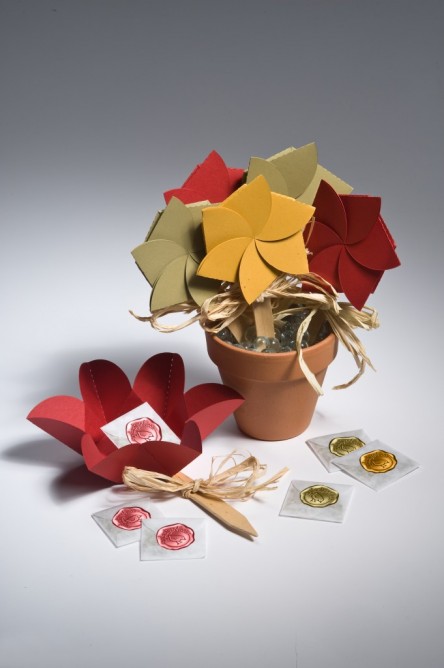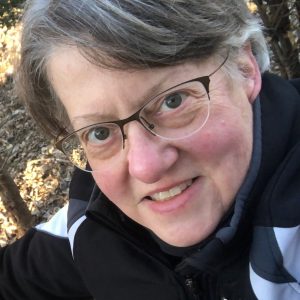Wendy Jedlička (CPP, MIM) is a front-line sustainable packaging designer. We recently caught up with her to discuss her career in eco-friendly packaging as well as her fully online course devoted to the subject, Packaging Sustainability. The course begins January 17, 2012 and registration is open. This is a 15-week course that is part of MCAD’s Sustainable Design Online Program.
SDO: What spurred you to become a sustainable designer?
Wendy: When I realized as I hit save for a file going to a printer to package a commodity product I just updated for a very large client, that it was about to become 3-million really badly considered, resource intensive boxes that the customer would immediately throw away.
My hitting Command+S was the start of trees being clear cut and habitat lost, huge drums of toxic chemicals being deployed, barrels and barrels of fossil fuels burned, tons of toxic emissions sent into the air, tons of metals and minerals mined and more habitat lost, piles of waste land-filled; it was an intense moment.
SDO: Describe one of your favorite moments/projects as a sustainable designer.
Wendy: Actually it wasn’t as a designer, but while working on my MBA. After my Command+S epiphany, I quit my job at the packaging design firm which had no interest in doing anything but perpetuating the status quo, and started my own consultancy. To be able to bid on larger jobs, especially those with multinational reach and impact, I knew I needed to have business credentials, not just a nice portfolio — so I enrolled in a Master of International Management program.
The program, though forward thinking in a global economy way, was still very much supply and demand minded with no concern for decision impacts. In the mid 1990s though, sustainability in business was just starting to get on people’s radar. And there were certainly no master’s programs dedicated to understanding these ideas as there are now. So I made it my personal goal, that if the teachers were unable to give the students the education they needed to really perform in a global market, I would make all of my projects connected to sustainability in some way, and present them to the class, turning them on to the ideas.
After doing an overview of “waste as a line-item asset” for my International Accounting class, the teacher openly thanked me for the opportunity to talk about these forward looking issues. In his own practice, including alternative profit centers on a client’s balance sheet was just starting to pop-up. And he personally wished that the tools he was required to teach with were not so far behind what was actually going on in business.
For me as a designer looking to tackle larger projects, making waste or any other input/output, a valuable part of whatever solution I would be working on rather than just another cost to deal with, and would be part of my point of difference a a service provider. Showing I could consider the whole of a more profitable system, rather than just make a box look pretty. I had the power to offer a client the whole package, not just another facade.
As I got more and more into understanding the business side of things my work became stronger, more balanced, and more sustainable both from the business side as well as the environmental side.
Wendy: Packaging Sustainability is about understanding the whole package, not just making another pretty facade. The class is both a stand-alone introduction to holistic design and sustainable business, as well as a chance for sustainable design students to use all of the skills they’ve been building in the program.
Packaging has the unique perspective of touching nearly all aspects of today’s economy. It is equal measures economic driver, marketing, design, logistics, product, waste stream, and resource. Second to energy, it is one of the few things produced that impacts all sectors, and all demographics — regardless of economic status or other social divisions. Everybody touches, and is touched by, packaging everyday.
This class is intended to let all stakeholders experience what the various players in the supply chain do. Marketing, business, design, engineering, city planning and lawmakers, a store’s buyers, brand managers, and consumers, all will benefit from having a more holistic understanding of what packaging is about.
Wendy: A solid understanding of systems thinking and deep decision impacts.
Wendy: By having had the opportunity to touch every aspect of an economic vehicle, every decision can be made with much better insight and care — helping to make for real and long-term positive change.
SDO: In what ways do you apply ‘Packaging Sustainability’ to your work?
Wendy: I’m a packaging designer and sustainability educator. The areas we cover in class touch on absolutely everything I do.
Wendy: The ideas of sustainability were the foundation of civilization, but these ideas have been lost in the rush to industrialize. Early practitioners like R. Buckminster Fuller have been talking for decades about solutions that harken back to this more balanced approach to progress. What’s been missing in this effort though is a single, unified, language and shared vision: Risk Management, Green Movement, Social Justice, Ecology, Environmentalism, Pollution Control, Conservationism, all of these are part of sustainability.
So though the paths may be different, the end-goal of all who choose to participate in change (and so the opportunities found there) is the same. But moreover, all of the varied efforts and ideas that have come before are finding a single home, renewed energy, and a broader participant base. The ideas of sustainability are as old as civilization itself, only the language has changed.
Image courtesy of @Jedlicka Design Ltd. Packaging was created for Mybackyard Seed Flower. Specifications of this sustainable packaging project are listed below.
Design Criteria: Create a unique giveaway for trade shows and other promotional opportunities. The solution must reflect the natural purity and respect for the earth that is the core of the Mybackyard philosophy. In addition, the item must have uncommon value and a touch of fun.
Solution: The package “flower” opens to reveal five small seed packets inside. Sell-copy on the packets and flower back label outline the Mybackyard product line the flower color represents. The back label layout is designed to allow the user to pull the plant marker off the “flower” and use as a ready-labeled garden marker.
Eco-aspects: Plant markers used for the “stem” are sourced from Certified Sustainable Forestry suppliers. “Flowers” and seed packets are made from high post-consumer waste or tree-free papers. The “leaves” are made from natural raffia. All label stocks are recycled paper with no or low-solvent glues as available. Fabrication of the marker was designed to allow the seed flower to be a low-cost, as-needed promotional item, without huge sunk costs in materials or vendor services. Use/Reuse: In addition to the intended second life as a garden marker, the “flower” portion can be reused as a mailable “bow” for holiday packages or a wide variety of craft/gift applications.

